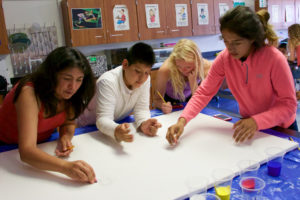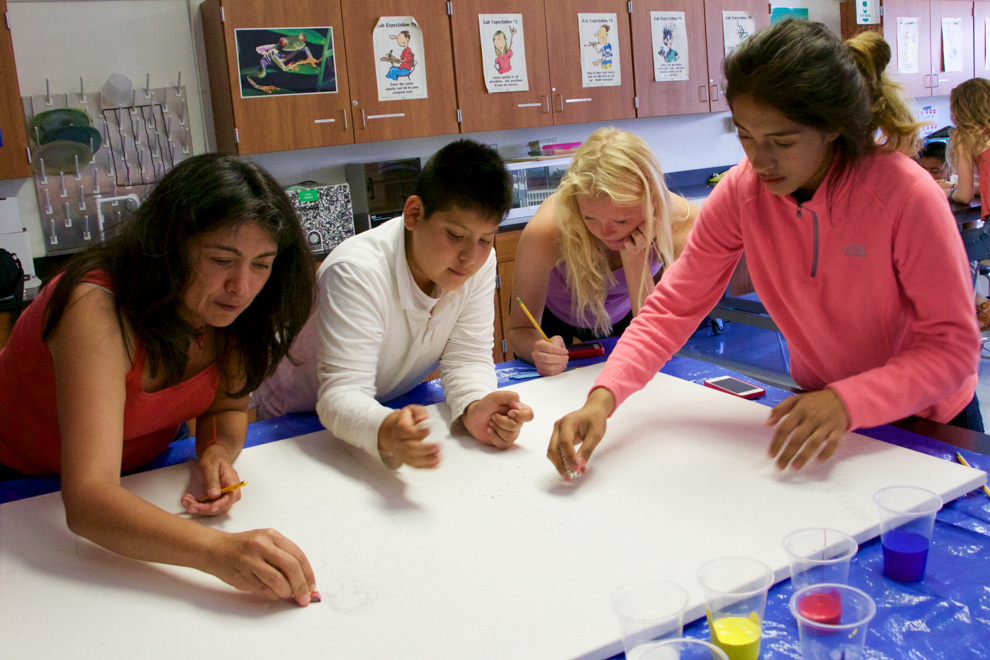All undergraduates can now apply for the Cardinal Service Notation, a distinction piloted last year that notes a student’s dedication to public service on his or her Stanford transcript.

A student becomes eligible for the Cardinal Service Notation either by taking 12 units of Cardinal Courses — courses with a significant community engagement component — or by participating in a Cardinal Quarter, a quarter-long public service experience in local or international settings. In the pilot program last spring, only graduating seniors were able to apply for the notation so that its founding committee could work out any issues with the process.
Program details
The application for the notation includes submission of a current unofficial transcript and an “academic integration statement” of at least 2000 words in which students describe how their Cardinal Service experiences allowed them to apply academic knowledge to community issues and contributed to their intellectual and civic development. The autumn deadline to apply for the notation was Oct. 30, while the spring deadline is April 16.
According to Luke Terra M.A. ’08 Ph.D. ’14, associate director of the Haas Center, the notation is a product of an ongoing cross-University conversation about how to better honor service at Stanford.
“We have talked at the Haas Center and with some of our faculty colleagues for a long time about how to recognize students’ public service experiences and how to help them signal to both graduate schools and future employers that public service was a part of their undergraduate experience,” Terra said.
Terra said that the idea for the notation came about last year after the launch of Cardinal Service, an initiative designed to promote student service.Terra and others at the Haas Center began discussion with the registrar, faculty and students across campus to gauge if a transcript notation of public service would be a reasonable and valuable addition to Cardinal Service. Positive feedback spurred the notation’s eventual creation.
In creating the notation, Stanford sought to take advantage of the service momentum built by Cardinal Service programs. Both student participation and opportunities in these programs have increased dramatically over the past few years, with the three-year-old Cardinal Courses program alone progressing from 46 course offerings in 2013 to 131 this year. In the same time frame, the percentage of graduating seniors who have participated in at least once Cardinal Course has risen from 18 percent to 27 percent.
In light of this growth, Cardinal Service wanted to continue making its opportunities more visible to students.
“We feel that public service has always been at the core of what a Stanford education is all about,” Terra said. “It’s what Jane Stanford originally designed Stanford to offer… The Cardinal Service Notation is another piece of making sure that service stands out as a distinctive feature of a Stanford education.”
According to Terra and Larry Diamond ’73 ’78 Ph.D. ’80, senior fellow at the Hoover Institution and faculty leader of the Haas Center at the time of the notation’s development, the notation was also motivated by a desire to better recognize service-minded students and to work toward a more inclusive vision of the transcript.
“The transcript is evolving, and I think in very imaginative ways,” Diamond said. “It develops the potential to record more fully the academically-related accomplishments of students at Stanford, and not necessarily only in the classroom.”
Service reflections
As the process of developing the notation continued, Terra and others involved also began to see the academic integration statement in the application as a unique opportunity for students to reflect on what their service experiences have meant to them.
“By asking students to put that in writing, we give them a chance to think about how public service has informed their own development during their time at Stanford, and how it’s shaping or influencing their trajectory as they think about moving out into the world,” Terra said.
Students who completed the application process last spring have expressed appreciation for the format and style of the application.
“The written statement was a good chance for me to reflect on my experiences, in particular how they differed from my original learning plan,” wrote Sophia Cristel ’15 M.A. ’17, a notation recipient from last spring, over email. Cristel’s biggest undergraduate service project was the creation of interpretive signs for the Palo Alto Baylands wildlife reserve. She wrote about her pride in this work and its impact on her application.
On the other end of the application process, faculty and Haas Center officials involved in creating and awarding the notation found reading student statements like Cristel’s to be especially rewarding.
“It was great for me to even see our hard-nosed faculty hit in their soft spot because students were commenting on such amazing work that they were able to accomplish through their service experiences,” Terra said.
At the same time, Diamond stressed that the notation itself may not directly impact Stanford service. Rather, the notation is a piece of the Stanford service puzzle, and it will hopefully facilitate further growth.
“I think that it’s not the notation that will have an impact, it’s Cardinal Service,” Diamond said.
Program goals
Moving forward, the Haas Center has several goals for further development of the Cardinal Service Notation and Cardinal Service in general. These goals include recognition of Cardinal Service Notation recipients at commencement ceremonies — possibly at the department or major commencements at first — and the incorporation of “Cardinal Commitment” into the notation.
Cardinal Commitment refers to long-term service commitments separate from Cardinal Courses or Cardinal Quarter. However, this program and its integration into the notation are still in the early stages.
Students who have received the notation emphasized that although the notation was a welcome source of validation, the inherently rewarding nature of their service is much more important. However, they appreciate that students who may not have otherwise become involved in service may now have a greater incentive to do so.
Vy Tran ’15 M.A. ’17, a Fulbright Scholar and another recipient of the notation last spring, believes that the notation is a positive step forward.
“Public service changes you whether you go into it for the right reasons or not–you really can’t help people without feeling it in your heart,” Tran said. “You will inevitably be transformed by the experience.”
Contact Lucy Arnold at lucywa ‘at’ stanford.edu.
